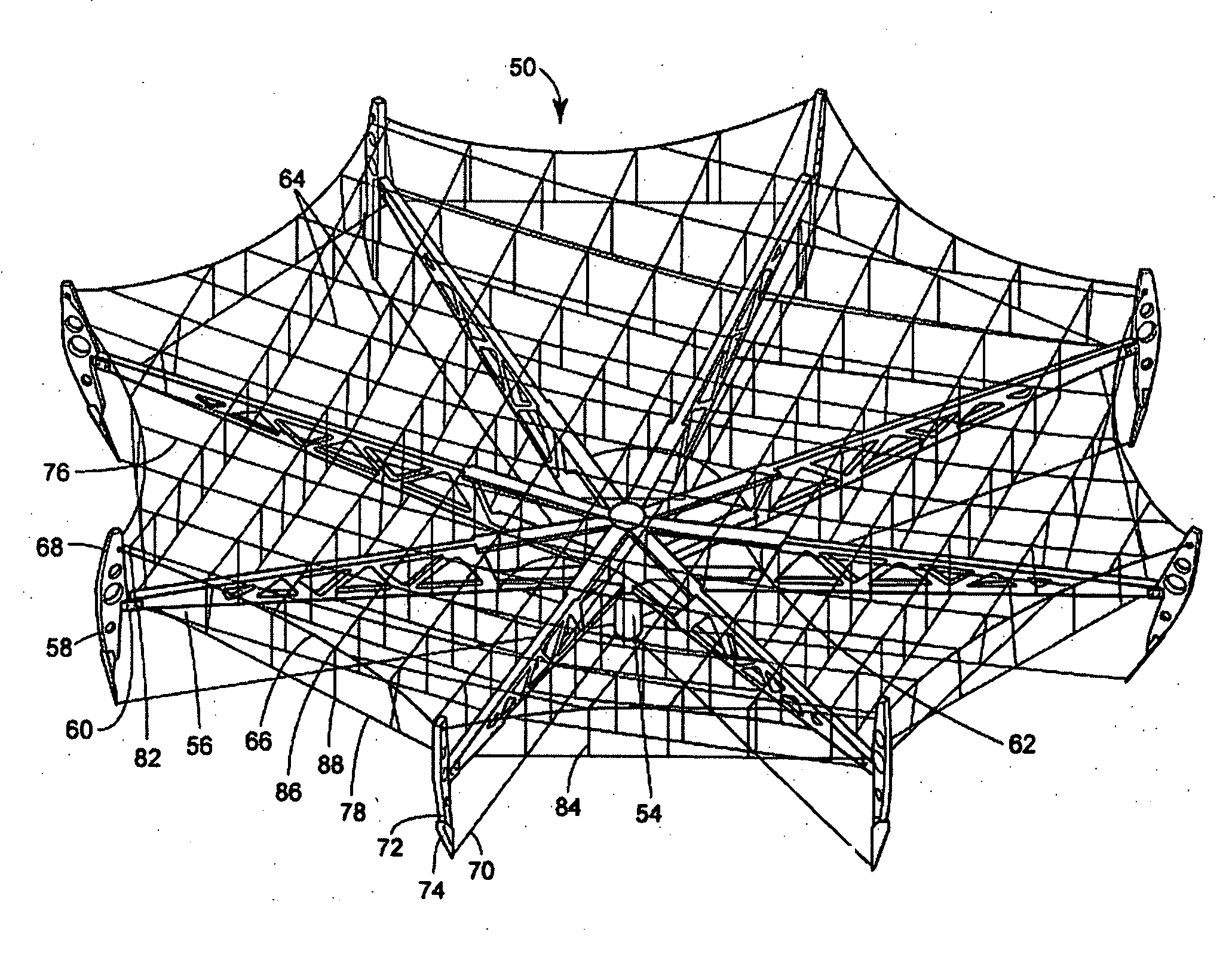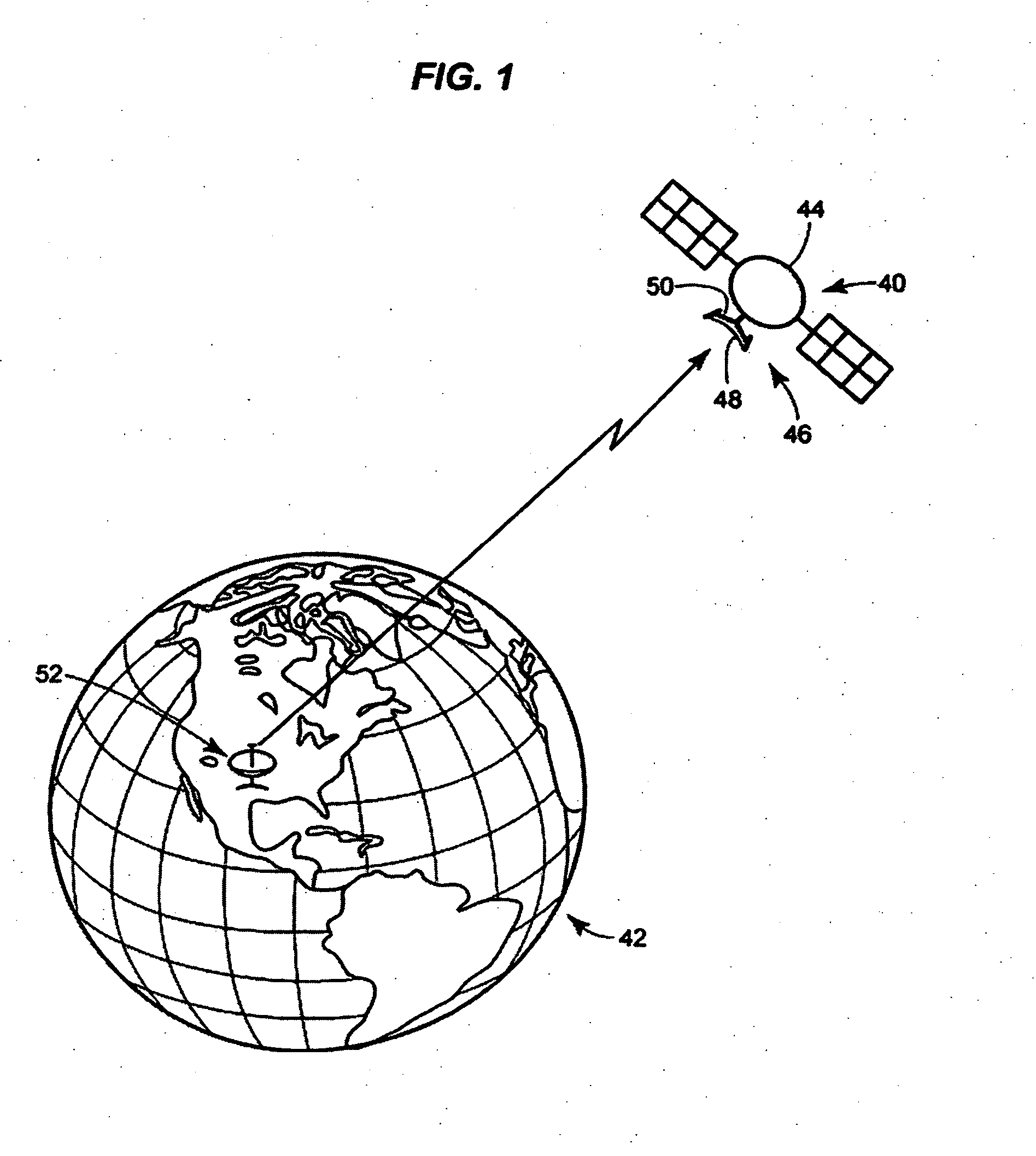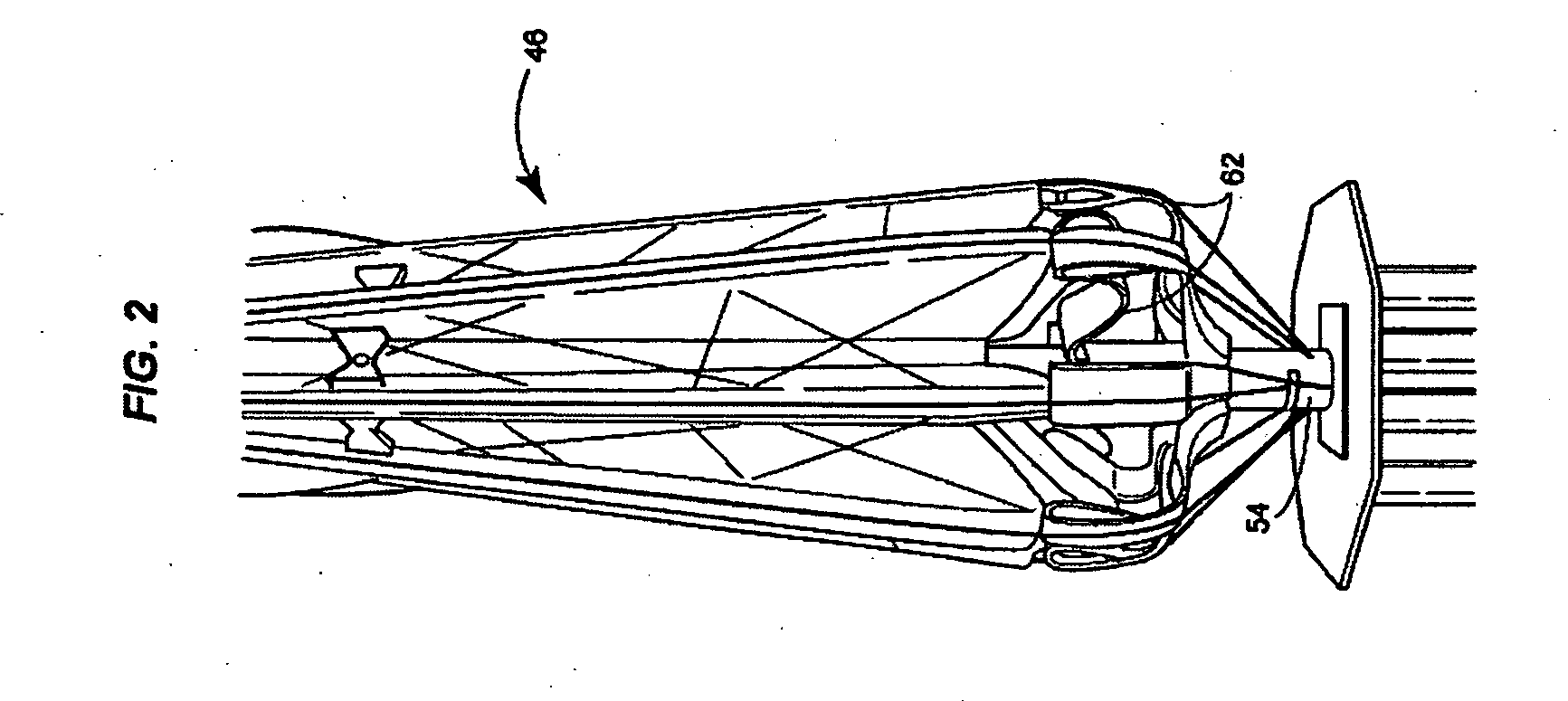Arbitrarily shaped deployable mesh reflectors
a mesh reflector and orbital shape technology, applied in the direction of antennas, electrical equipment, etc., can solve the problems of reducing the performance of the mesh reflector, reducing the degree of separation of the mesh, and limiting the size of the solid surface (or segmented surface) reflector, so as to control the magnitude of the tension in the chord
- Summary
- Abstract
- Description
- Claims
- Application Information
AI Technical Summary
Benefits of technology
Problems solved by technology
Method used
Image
Examples
Embodiment Construction
[0068] In FIG. 1, a perspective view of a satellite 40 in orbit about the earth 42 is illustrated. The satellite 40 itself includes both a body 44 and a deployable mesh reflector type antenna 46 mounted thereon. The deployable antenna 46, in turn, includes both a reflective mesh 48 and a supportive framework 50 for deploying and suspending the mesh 48. In having the deployable antenna 46 onboard, the satellite 40 is able to send and receive electromagnetic waves for thereby communicating with, for example, a ground communications station 52 while the satellite 40 is in orbit in outer space.
[0069] The reflector 46 is shown in FIG. 2 in a stowed configuration and in FIGS. 3 and 4 in a deployed configuration.
[0070] The reflector support structure comprises a slender composite hub 54 carrying eight radial ribs 56 with eight pivot arms 58, each mounted at a tip 60 of a rib 56. Each rib 56 may have a cross-section at the inner end having a substantially longer dimension in an axial dire...
PUM
| Property | Measurement | Unit |
|---|---|---|
| Angle | aaaaa | aaaaa |
| Angle | aaaaa | aaaaa |
| Angle | aaaaa | aaaaa |
Abstract
Description
Claims
Application Information
 Login to View More
Login to View More - R&D
- Intellectual Property
- Life Sciences
- Materials
- Tech Scout
- Unparalleled Data Quality
- Higher Quality Content
- 60% Fewer Hallucinations
Browse by: Latest US Patents, China's latest patents, Technical Efficacy Thesaurus, Application Domain, Technology Topic, Popular Technical Reports.
© 2025 PatSnap. All rights reserved.Legal|Privacy policy|Modern Slavery Act Transparency Statement|Sitemap|About US| Contact US: help@patsnap.com



